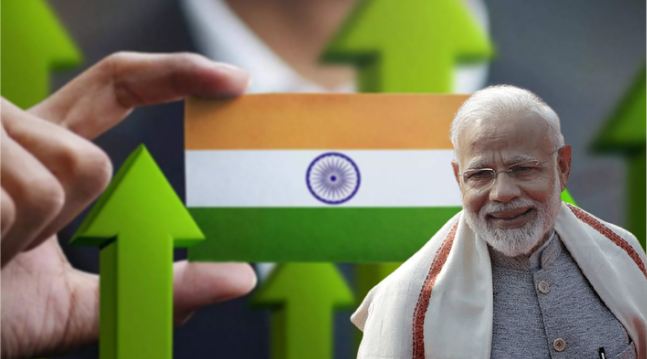- Agriculture export would be around 12.5% of India’s total commodities export (400 billion dollars) and 7.5% of the country’s total export
- In FY 18 and FY 19, agricultural export was stagnant around 38 billion dollars while in FY 20 it declined to 35 billion dollars
- Moreover, the government brought New Textiles Policy, 2020, and last year Production Linked Incentive (PLI) scheme was approved for the textiles sector to encourage the production and export of textiles.
For the first time in its history, India’s agriculture exports are set to cross 50 billion dollars in FY 22. The exports of the country are growing exponentially and the total commodities export is expected to touch 400 billion dollars, while services export is estimated to be around 250 billion dollars.
Agriculture export would be around 12.5% of India’s total commodities export (400 billion dollars) and 7.5% of the country’s total export (650 billion dollars).
In the last two years, India’s agriculture has witnessed very good growth thanks to the good monsoon. The exports are growing because agricultural patterns were disturbed in traditional agriculture export powerhouses like China, Brazil, and Russia.
Also, amid the pandemic, the demand for unprocessed agricultural products grew in many countries and India was able to meet their demand through export.
In FY 18 and FY 19, agricultural export was stagnant around 38 billion dollars while in FY 20 it declined to 35 billion dollars. But in FY 21, which was a pandemic year, the agriculture export grew by 17 per cent to 41 billion dollars, and FY 22, it is expected to touch 50 billion dollars with above 20 per cent growth.
India’s agriculture export has not grown much in the first five to six years of the Modi government but in the last two years, the growth has been in double digits.
“Growth was due to the opportunities that Covid-19 offered. It was also due to various programmes emanating from agriculture policy that came into effect in December 2018. It was implemented in districts and clusters. Many clusters and districts that were not exporting earlier have started doing it now,” said a Commerce Ministry official after the data for the last year’s agriculture export was released.
In December 2018, the Modi government released a new agriculture export policy, and in May 2019, the Modi government appointed Piyush Goyal as the minister of commerce and industry. Under the leadership of Piyush Goyal, the Agricultural and Processed Food Products Export Development Authority (APEDA) has been very active in promoting the export of agricultural produce in many new markets including the European Union and the United Kingdom.
Last year India broke into the top 10 agricultural exporters for the first time, replacing New Zealand. The other top Agri exporters are European Union, the United States, China, Brazil, Russia, and Mexico.
Another area where India is pushing hard for exports is textile. The textile export of the country has also remained stagnant for the last five to six years in the range of 30-35 billion dollars but this year, the government has set a target of 44 billion dollars.
The government approved the extension of the Remission of Duties and Taxes on Exported Products (RoDTEP) scheme for three years till FY 24 in July last year to encourage textile exports. Also, the Modi government brought Piyush Goyal to the textile ministry to encourage the export of textile products from India. Under the leadership of Santosh Gangwar (2014-2016) and Smriti Irani (2016-2021), there has not been much improvement in textile export.
Moreover, the government brought New Textiles Policy, 2020, and last year Production Linked Incentive (PLI) scheme was approved for the textiles sector to encourage the production and export of textiles.
By pushing for export in labour-intensive sectors like Agriculture and textiles, India can employ its large population and grow its economy at double-digit. The Economic Survey in the last three years has made it very clear that the government aims investment-driven and export-led growth, and sectors like agriculture and textile would be crucial in achieving the same.
